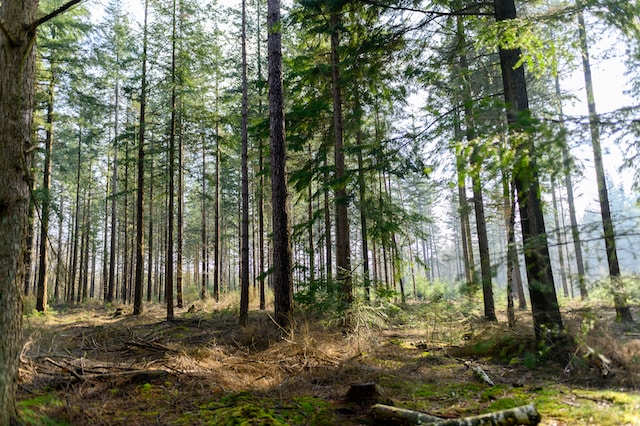Tree trimming removes dead or dying branches and limbs that can cause harm if they fall. It also enhances the appearance of your property and encourages growth.
Overgrown branches obstruct landscapes and pose a safety hazard during storms or high winds. Regular trimming ensures sunlight can reach all canopy parts to promote healthy growth.
Improves Appearance
A property with overgrown trees and shrubs can be messy and unkempt. Regular trimming of limbs improves the overall appearance by enhancing the shape and maintaining the natural beauty of your landscape.
In addition to removing dead and dying limbs, tree trimming eliminates branches too close to your house or other structures, creating a risk of damage. It also improves the airflow around your property, reducing the likelihood of pest infestation and disease.
Often, tree trimming and pruning are confused with each other, but they are different services that promote a healthier landscape. Pruning is used to remove unhealthy limbs, while trimming encourages proper growth. Depending on the species, certain trees require regular trimming, while others can go years without it. For example, flowering and fruit trees should be trimmed annually, while evergreens can grow without pruning. Regular trimming helps ensure your landscape is healthy and attractive for residential and commercial clients.
Reduces Risk of Injury
Tree limbs can fall, damage your property, and hurt someone if they’re not trimmed regularly. A tree with dead branches or an unbalanced shape is dangerous to passersby, especially during storms and high winds. Regular trimming keeps the branches away from your home and other structures and power lines.
Another benefit of regular trimming by Tree Work Now is that it helps promote healthier, faster growth. This is because crowded or damaged branches prevent the plant from accessing sunlight, which can slow down its development and inhibit blooming. Trees trimmed properly also have less root loss, essential for retaining energy and reducing stress on the tree. Lastly, pruning helps to remove dead or diseased branches that could spread infection throughout the rest of the plant.
Reduces Energy Costs
As a result of an above-ground electricity distribution network paired with a heavily forested landscape, Connecticut experiences frequent power outages. Utility companies regularly trim trees that encroach on power lines to reduce outages. While this is a costly and labor-intensive procedure, it helps to decrease outages and improve electric reliability.
Moreover, trimmed branches do not fall onto cars or homes during storms, preventing damage. The removal of dead limbs also limits the spread of disease within the tree.
In addition, regular trimming allows for improved sunlight penetration to the ground and lower branches. This is especially helpful for fruit-bearing trees because it gives them a better chance of getting the nutrients they need to thrive.
Prevents Disease and Pests
A significant reason to trim trees is to prevent disease and pests. By removing dead branches, you can eliminate infection points that could spread to the rest of the tree, leading to severe problems.
Additionally, overgrowth can provide hiding spots for pests. However, trimming removes these potential locations and significantly reduces their population. In addition, thinning a dense canopy promotes airflow, decreasing the foliage’s moisture levels. This makes it less favorable for pests that thrive in damp conditions.
Overgrowth can also prevent sunlight from reaching the lower parts of the canopy. This hinders the process of photosynthesis and can even lead to the tree’s death. Regularly removing limbs that are too low can ensure the tree gets all the light it needs to grow strong and healthy. This can also help you avoid the costly repair and replacement costs associated with damaged or dead limbs.

